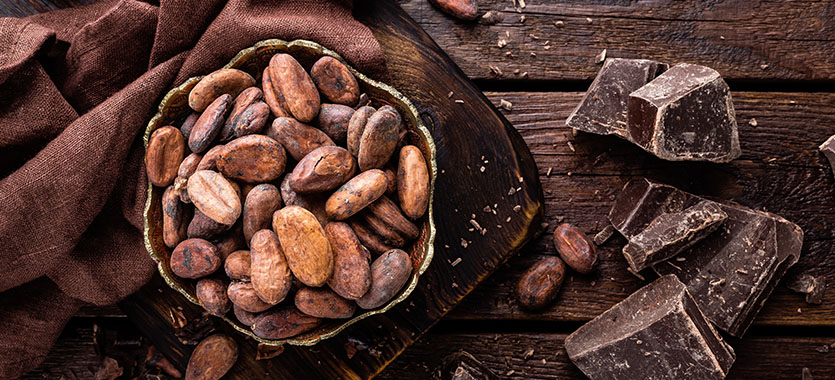Cocao Vs Cocoa whats the difference or is it a spelling error?
No, it’s not, they are very different as the cacao and nibs are the bean in its raw state, uncooked and unprocessed. Whereas cocoa powders tend to contain milk, unhealthy sugar and saturated fat.
The Cocoa Bean
The Cocoa tree comes from South America. Its botanical name is Theobroma Cacao and it is the seed the cocoa bean that gives us cocoa powder and chocolate.
Chocolate makes us feel good, but it’s not good for us—the cocoa bean is which has some impressive qualities.
Using raw cocao instead of the conventional cocoa powders makes all the difference!
What Chocolate should I eat?
Stick with dark chocolate as a general rule, it has more cocoa and therefore more flavonoids than milk chocolate.
The higher the cocoa content of the bar is better for health. Look for bars with 70% cocoa or more. It also has less unhealthy sugar and saturated fat.
Raw cacao nibs have an ORAC value of 62,100
What Chocolate offers
Cocoa contains flavonoids, or antioxidants
The beans are about 50% fat—palmitic, oleic, and stearic acids.
Alkaloids include theobromine and caffeine.
phenylethylamine (an alkaloid) which acts as a minor antidepressant as well as a stimulant.
Articles:
Cocoa, Chocolate, and the Theobromine Effect
Research:
Harvard Health – Sweet dreams: eating chocolate prevents heart disease
Conclusions: Stick with an ounce of dark chocolate every so often—with some Chocolate Therapy in between.
Medical Journal Heart – Habitual chocolate consumption and risk of cardiovascular disease among healthy men and women
Conclusions: Cumulative evidence suggests that higher chocolate intake is associated with a lower risk of future cardiovascular event
The European Food Safety Authority – Scientific Opinion on the substantiation of a health claim related to cocoa flavanols and maintenance of normal endothelium
Conclusions: In order to obtain the claimed effect, 200 mg of cocoa flavanols should be consumed daily. This amount could be provided by 2.5 g of high-flavanol cocoa powder or 10 g of high-flavanol dark chocolate, both of which can be consumed in the context of a balanced diet
Harvard Health – Cocoa: a sweet treat for the brain?
Conclusions: The benefits of cocoa flavanols on cardiovascular health are well established, and for the general population a daily intake of 200 mg of cocoa flavanols is starting to emerge as a potential target within the context of a balanced diet. But throw in some other sources of flavanols—blueberries, cherries, and red wine
American Clinical Nutrition: Cocoa flavanol consumption improves cognitive function, blood pressure control, and metabolic profile in elderly subjects: the Cocoa, Cognition, and Aging (CoCoA) Study
Conclusions: This dietary intervention study provides evidence that regular CF consumption can reduce some measures of age-related cognitive dysfunction, possibly through an improvement in insulin sensitivity. These data suggest that the habitual intake of flavanols can support healthy cognitive function with age.



